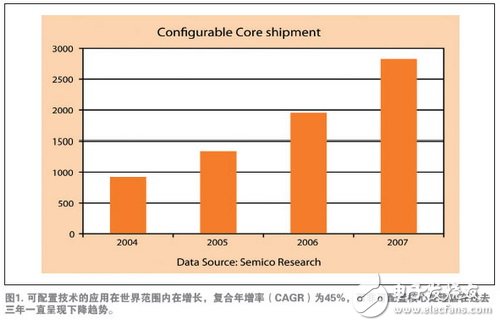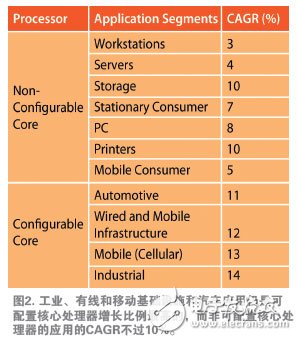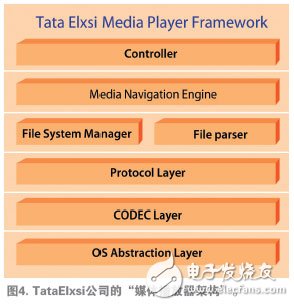Traditionally, system-on-chip (SoC) designers have had to deal with rigid, non-configurable core technologies. It is well known that traditional core processes are not configurable during design or manufacturing and cannot be customized for a variety of purposes. These processes, in turn, create the urgent need to include custom programs in the processor, configure multiple applications, and integrate tools for software development to simplify machine language programming.
With the advent of configurable core processors, SoC designs are expected to undergo major changes to change these design issues. The main benefits that affect SOC design capabilities are: reduced development costs, reduced chip redesign, faster entry into various vertical markets, unique performance and design flexibility without compromising system features and performance. In addition, SOC designers can make changes to the CPU architecture to speed up the device for some applications, making it difficult to replicate.
Current configurable core processors have emerged in a variety of applications. These applications include wireless computing, mobile audio and video players, flash memory devices, digital set-top boxes (STBs), networking equipment, imaging, industrial control, office automation, and consumer electronics.
Configurable technology will replace non-configurable technology
According to data from Semico Research, shipments of core processors that could be formulated in 2005 and 2006 reached 1.3 billion and 1.6 billion, respectively. Shipments of core processors that can be formulated in 2007 are expected to reach 2.8 billion units. Worldwide, the use of formulate technology is growing, with a compound annual growth rate (CAGR) of 45%, while non-configurable technology has been declining over the past three years with a CAGR of 8%.
As for the growth of the application sector, industrial applications (14%), mobile phones (13%), cable and mobile infrastructure (12%), and automobiles (11%) are still the most growing applications for configurable core processors. The fastest growing non-configurable core processor applications are printers (10%), memory (10%), PCs (8%), fixed consumer appliances (7%), and mobile consumer devices (5%). .
Although there are many leading configurable core (processor) companies such as Tensilica, ARC, Stretch, PACT XPP, IpFlex, Rapport, IBM Cell, and Morphing Machines, the competition is mainly between the two technologies - configurable and non- Configurable technology, industry observers generally hold this view.
While the market space for configurable core processors is still growing and relatively early in comparison to non-configurable core processors, as more companies introduce configurable technologies to combat non-configurable core processor companies, Such as Intel, ARM and MIPS, configurable solutions are expected to replace companies such as Intel, ARM and MIPS. In addition, the market shifts from PCs to mobile phones, from general-purpose processors to dedicated, cost-effective solutions that accelerate the application of configurable core processors.
Hardware and software design challenges
The media sector is currently evolving in performance, applications and the most important hardware solutions. Unlike traditional media solutions, such as DSPs, FPGAs, and ASICs with a fairly narrow range of applications, the latest configurable hardware solutions are flexible, scalable, and cost-effective.
Despite improvements in processor technology, changes in complex algorithms, protocols, and media market applications have led designers to expect power-efficient hardware solutions: smaller gates, more features, and higher-end performance.
The latest trend in this area is to use a configurable processor, a reusable array, and load the client's program as needed for the application. These architectures mine data parallelism and archiving performance by processing massive amounts of data. New technologies are often sourced from Tensilica, Stretch, and other configurable core processor companies.
At the same time, consumer electronics is still driven by the convergence of home entertainment, portable and mobile applications that are becoming more complex – networked and interconnected – adding to the complexity of the product.
One thing to note is that software designers face challenges in development, port design, and implementation of software applications that are superimposed on these application platforms. Similarly, software IP providers are also experiencing design, integration, testing, and power management challenges.
Media player architecture
Tata Elxsi has successfully acquired support for different applications, its unique "media player architecture" is flexible, scalable, small, low maintenance and cross-platform portable for DVD players, portable players (PMP) and broadcast media Player (BMP), which can be used in any application area of ​​digital media.
Features of this "media player architecture" include object-oriented modular design; explicit interfaces; standardized and categorized error handling mechanisms; call-backs for response signals; loose coupling structures and smaller Occupancy area.
TataElxsi's "media player architecture" has reusable parts compared to open source and is therefore suitable for broadcast media. These include DVB-H and AV playback, H264/MPEG-4/HEAAC/MP3 decoder support, MPEG-4 recording, JPEG slide show, playlist management, and common file format support.
H264 encoder modular architecture
Another challenge in implementing hardware is to interrupt continuous execution in a modular design. TataElxsi has developed an H264 encoder IP that supports baseline and main lines. This type of encoder is also designed with a modular architecture, an application execution architecture/module level, a clean interface, and an algorithm that is easy to modify and interface, fixed-point implementaTIon.
The H264 encoder features TataElxsi's rich algorithms, which support motion prediction, rate control, reference picture selection, and MB-type prediction. It also splits algorithms and supports modular architecture. Because of the scalability, this architecture can be used across configurable processors, multi-core processing, DSP arrays, and FPGA solutions, and has been used as a configurable or general purpose processor on different hardware solutions.
Conclusion
As with all technology trends, the budding and growing configurable core processor industry continues to be power-centric, with the bottom line of cost savings. Especially in the semiconductor industry, this is always an advantage compared to competitors. Changes in user requirements must be met with the most cost-effective solution without compromising performance, which offers a wide range of opportunities to enter the configurable core processor business.
Tata Elxsi has a rich AV encoder/decoder and media solution designed to keep an eye on the ever-changing hardware platform. This modular design approach is applicable to software IP, such as the AV encoder/decoder used to complete the "media player architecture." This gives rise to the advantages of faster time to market and upgradeability.

Figure 1. The application of configurable technology is growing worldwide, with a compound annual growth rate (CAGR) of 45%.
The non-configurable core processor has been declining over the past three years.

Figure 2. Industrial, wireline and mobile infrastructure and automotive applications continue to have the highest growth rate of configurable core processors.
The CAGR of applications that are not configurable core processors is only 10%.

Figure 3. The connection network of the media device.

Figure 4. TataElxsi's "Media Player Architecture."
Diamond turning and diamond boring
Both diamond turning and diamond boring are performed with polycrystalline diamond tools.
honing
Honing is to use the oil stone (also called honing bar) inlaid on the honing head to finish the hole.
grinding
Grinding is the use of coated or pressed abrasive particles embedded in the grinding tool, through the grinding tool and workpiece in a certain pressure of the relative movement of the surface for finishing processing.
superfinishing
Ultra-finishing is the finishing of the finished surface by using fine-grained whetstone mounted on the vibrating head.
Abrasive belt grinding
Belt grinding is the grinding of workpiece surface with high-speed annular belt.
Mirror grinding
Mirror surface grinding is a grinding method to achieve the optimum surface roughness. After grinding the workpiece, the surface roughness is not more than 0.01 micron, the light is like a mirror, can be clear imaging
Precision Machining,Casting Exhaust Manifold,Stainless Stee Milling,Custom Cnc Machining Part
Tianhui Machine Co.,Ltd , https://www.thcastings.com